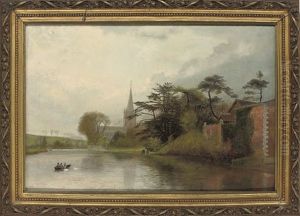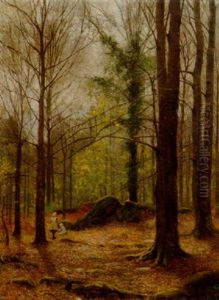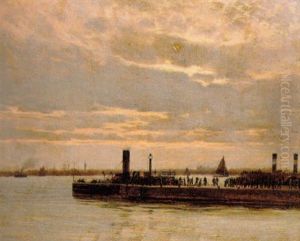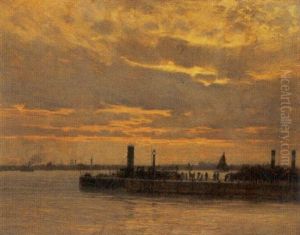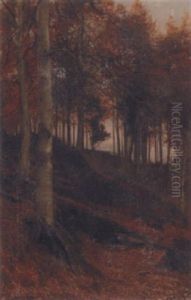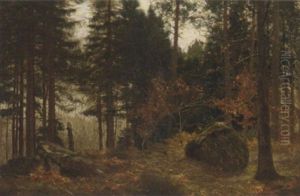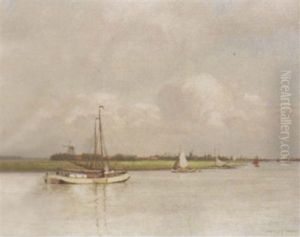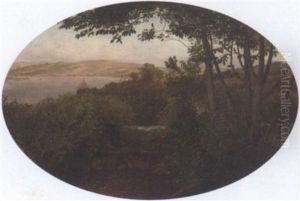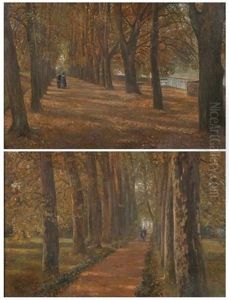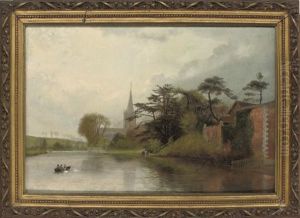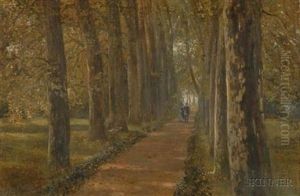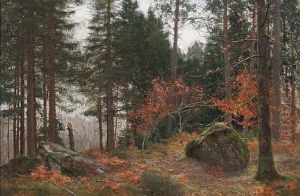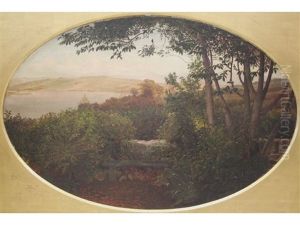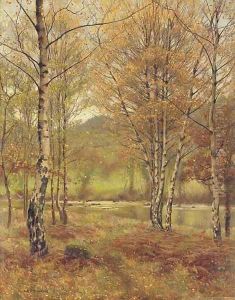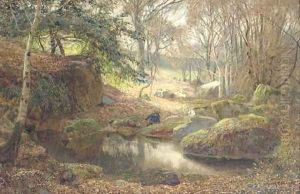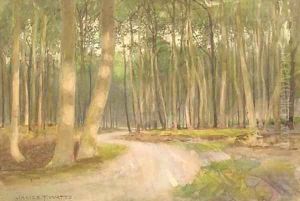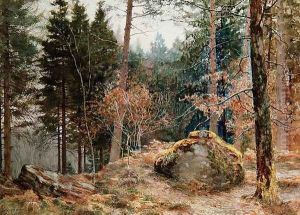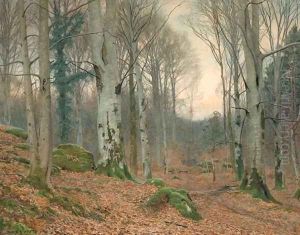James Thomas Watts Paintings
James Thomas Watts was an English painter and watercolourist, recognized for his contribution to the Victorian era's art scene. Born in 1853 in Manchester, England, Watts developed an early interest in art, influenced by the rich cultural environment of his hometown. He pursued his artistic education at the Manchester School of Art and later at the Royal College of Art in London, where he honed his skills in painting and watercolour.
Watts was particularly noted for his landscape and portrait works, which were characterized by their meticulous detail, vibrant colors, and the ability to capture the essence of his subjects. His landscapes often depicted the English countryside, showcasing its beauty and tranquility. In addition to landscapes, Watts also had a keen interest in painting historical and literary subjects, drawing inspiration from classical stories and contemporary literature.
Throughout his career, Watts exhibited his works at prestigious venues, including the Royal Academy and the Royal Watercolour Society. His contributions to the art world were recognized by his peers, and he became a respected figure among Victorian artists.
Despite his success, Watts remained dedicated to his craft, constantly experimenting with techniques and exploring new themes. His work received critical acclaim not only for its technical excellence but also for its emotional depth and ability to resonate with viewers.
James Thomas Watts passed away in 1930, leaving behind a legacy that continues to be celebrated for its significant impact on English art. His paintings are held in various collections and museums, appreciated by art lovers and scholars alike for their beauty and historical value.
